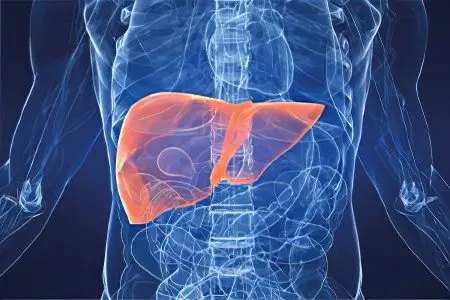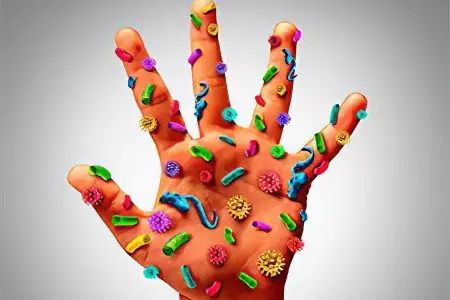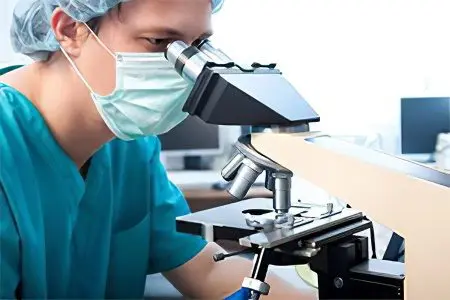Contents

Giardia in the liver is a protozoal invasion, which is provoked by protozoan microorganisms. The disease is characterized by disorders of the digestive functions. Abdominal pain, stool disorders, flatulence come to the fore. In parallel, the development of an allergic, neurotic and hepatolienal syndrome is possible.
Once in the human gastrointestinal tract, these single-celled organisms start a cycle of active reproduction. In adults, Giardia invasion more closely resembles the symptoms of pathology of the liver and biliary tract. However, signs of giardiasis will not always be present. It has been established that out of 40% of sick people, clinical manifestations of invasion are observed only in 20%.
Giardiasis is ubiquitous. Statistics indicate that in developed countries the number of adults with giardiasis is from 3 to 5%, and in developing countries from 10 to 15%. Most parasitologists are sure that the real number of patients is much higher, which is associated with a high probability of an asymptomatic course of invasion in adulthood.
Symptoms of Giardia in the liver in adults

Symptoms of Giardia in the liver in adults primarily depend on how long ago the infection occurred. Sometimes, after Giardia enters the gastrointestinal tract, a person simply remains a carrier of parasites, but there will be no clinical signs of the disease. Provided that a massive invasion has occurred, the symptoms will be as follows:
hepatolienal syndrome. This is a pathological condition characterized by an enlargement of the liver (hepatomegaly) and spleen (splenomegaly) in size.
Dyskinesia of the biliary tract, the development of cholecystitis.
Dyspeptic disorders, change of constipation to diarrhea, occurrence of foamy stools. If at the beginning of the disease the stool is liquid, then in the future it becomes fatty. Patients with Giardia are often diagnosed with enteritis, enterocolitis, duodenitis.
Rumbling in the abdomen, bloating, the appearance of severe pain in the intestines, in the right hypochondrium, in the navel. Massive giardiasis is characterized by belching and heartburn.
Allergic reactions. This is a very indicative symptom, especially if a person has not previously suffered from allergies. Manifestations of an allergic syndrome can be very diverse, ranging from skin itching and minor rashes to atopic dermatitis, bronchial asthma, and allergic bronchitis.
The characteristic signs of giardiasis in adults, on the part of the skin, are dryness, pallor, yellowness and peeling of the dermis. Often there are cracks in the corners of the mouth – these are the so-called seizures. Such symptoms are due to a violation of the absorption of nutrients and a deterioration in the functioning of the immune system.
The life process of Giardia is always accompanied by the release of toxins. They, in turn, negatively affect the nervous system. Therefore, the patient is more prone to depression, apathy and neuroses. Irritability increases, the person gets tired faster, becomes more restless.
Often patients complain of disturbing dreams, nocturnal awakenings, sometimes insomnia develops, which significantly impairs the patient’s quality of life.
Acute giardiasis lasts for a week, after which the person either heals on his own, or the disease becomes chronic.
For chronic giardiasis in adults, the following symptoms are characteristic:

Gradual weight loss;
Gradually developing psychopathological disorder with deterioration of mental and physical performance, with lethargy and irritability;
Periodic exacerbations of intestinal disorders (diarrhea, flatulence, etc.).
The intoxication syndrome will be the stronger, the longer and more massive the invasion.
The main manifestations of intoxication of the body against the background of giardiasis are as follows:
Enlarged adenoids;
Enlargement of peripheral lymph nodes;
Subfebrile body temperature, which lasts for a long time;
Persistent course of infectious diseases (cheilitis, conjunctivitis, blepharitis);
Immune system suppression.
However, despite the abundance of signs of Giardia in the liver in adults, the disease often remains undiagnosed for a long time. This is because the listed symptoms are not specific and can be observed in other diseases.
Causes of Giardia in the liver in adults

The source of distribution of lamblia is an infested person. It is he who secretes mature cysts of the parasite into the external environment. They leave the patient’s body along with feces.
Giardia carriers can be dogs, cats, rabbits and other animals. Various insects can carry Giardia larvae on their paws: cockroaches, flies, ants, etc. The infection mechanism is fecal-oral. Giardia cysts can penetrate into the human body through water, food and household contact.
Therefore, the following causes of parasitic invasion can be distinguished:
Violation of the rules of personal hygiene. Dirty hands are especially dangerous in this regard.
Eating contaminated fruits, herbs, vegetables, salads, berries, etc.
Drinking unboiled water. Although all tap water entering residential areas goes through several stages of treatment, Giardia cysts may be present in it. They are able to get there through damaged pipes, or in case of violation of filtration technologies. Naturally, the risks of infection increase significantly when drinking water from natural sources.
Poor sanitary living conditions. In this case, we are talking about the abundance of insects in the living room, as they are the spreaders of the infection.
Exploitation of common items without proper pre-treatment.
Any contact with soil is a potential hazard.
Invasion of the adult population will be the higher, the stronger the pollution of the environment, the worse the condition of the water supply and sewerage, the higher the crowding of teams, the lower the level of sanitary and educational work in a particular locality. These factors explain the high percentage of patients among the adult population in developing countries.
It is worth noting that the risk of invasion in adulthood is not as high as in childhood. The fact is that the digestive system of an adult is more perfect and has a more aggressive environment for parasites. Therefore, if several Giardia cysts enter the gastrointestinal tract, infection may not occur.
The likelihood of infection increases with the presence of the following predisposing factors:
Congenital malformations and anomalies in the development of the biliary tract.
Diseases of the digestive system, accompanied by low acidity and deterioration of enzymatic activity.
Surgical interventions on the stomach and duodenum.
Adherence to low protein diets.
Errors in nutrition, leading to dystrophy.
The maximum surge in the incidence of giardiasis is recorded in spring and summer.
Diagnosis of Giardia in the liver in adults

Diagnosis of Giardia in the liver in adults is quite difficult, due to the variety of symptoms, as well as the non-specificity of the clinical picture. Very often, patients with giardiasis are observed by gastroenterologists, allergists, neurologists, dermatologists and other narrow specialists, receiving treatment that is ineffective. Therapy does not help, since it is aimed at eliminating any giardiasis syndrome, and not at treating the underlying disease.
When examining a patient with suspected giardiasis, the doctor must pay attention to such signs as:
Pale skin;
Plaque on the tongue (most often it is white or yellow);
Enlargement of the liver in size;
Bloating and rumbling in the intestines;
Pain in the right hypochondrium and near the navel, which increase during palpation.
For the final confirmation of the diagnosis, a laboratory study of feces for Giardia cysts or a study of duodenal contents will be required. The main method of laboratory diagnostics is microscopic examination of fresh feces or smears.
To obtain and further study the duodenal contents, duodenal sounding is performed. When carrying out diagnostics, it should be borne in mind that cysts and trophozoites of lamblia do not come out with feces constantly, but cyclically. Therefore, to obtain the most reliable result, the study of feces should be carried out several times (from 3 to 5 studies during the month).
The diagnosis can be confirmed by ELISA, using PCR diagnostics. However, these methods are not leading in terms of diagnosis.
Indirect methods to suspect giardiasis in adults are:
Ultrasound of the liver, gallbladder, cholecystography.
Performing a hemogram. An increased number of eosinophils and monocytes in the blood will indicate giardiasis.
Performing a biochemical blood test. Indirect signs of invasion are a deficiency of B-lymphocytes, a decrease in albumin concentration, and high levels of alkaline phosphatase.
According to the results of the analysis of feces for microflora, signs of dysbacteriosis will be traced.
Thus, making a correct diagnosis, although difficult, is possible.
Treatment of Giardia in the liver in adults
Treatment of Giardia in the liver in adults should be carried out by a parasitologist. Self-administration of drugs is unacceptable. Therapy involves the implementation of three stages: preparatory, main and recovery.
The preparatory stage of the treatment of lamblia in the liver. First, it is necessary to create such conditions in the body under which Giardia will cease to actively multiply. For this purpose, the patient is transferred to a dietary diet with the use of bran, cereal cereals, fruits and vegetables. At the same time, they limit carbohydrate foods as much as possible, and first of all, sugars.
The main stage of treatment of lamblia in the liver. The main stage of ridding a person of parasitic invasion comes down to taking antiprotozoal drugs.
Restorative stage of treatment of lamblia in the liver. The last stage of treatment is aimed at restoring the human body. To do this, he is prescribed enterosorbents, vitamin complexes, immunostimulants. It is possible to use phytotherapy. The need for taking a particular drug is determined by the doctor.
As for the prognosis, with the competent implementation of the treatment regimen, its effectiveness reaches 95%. Although in the future, re-infection is not excluded, since the body does not develop immunity. In this regard, you need to follow the basic rules for the prevention of giardiasis: do not drink raw water, especially from open sources, keep your hands and premises clean.









